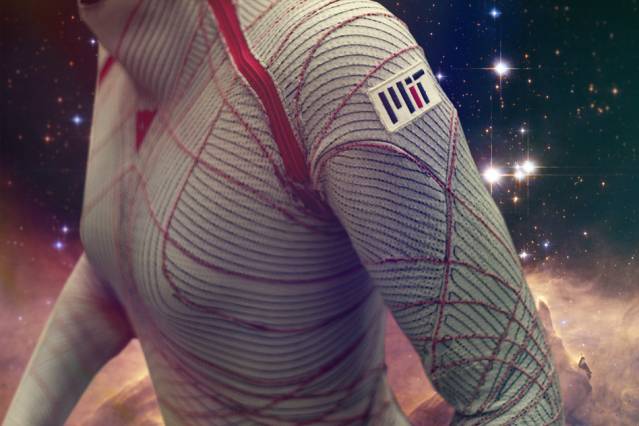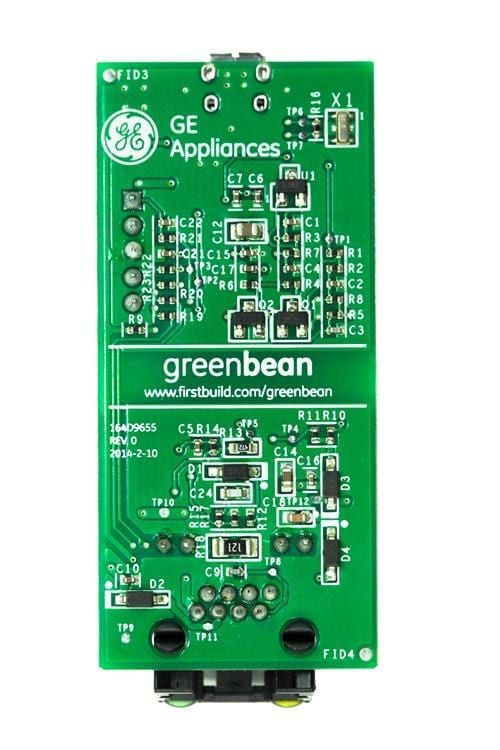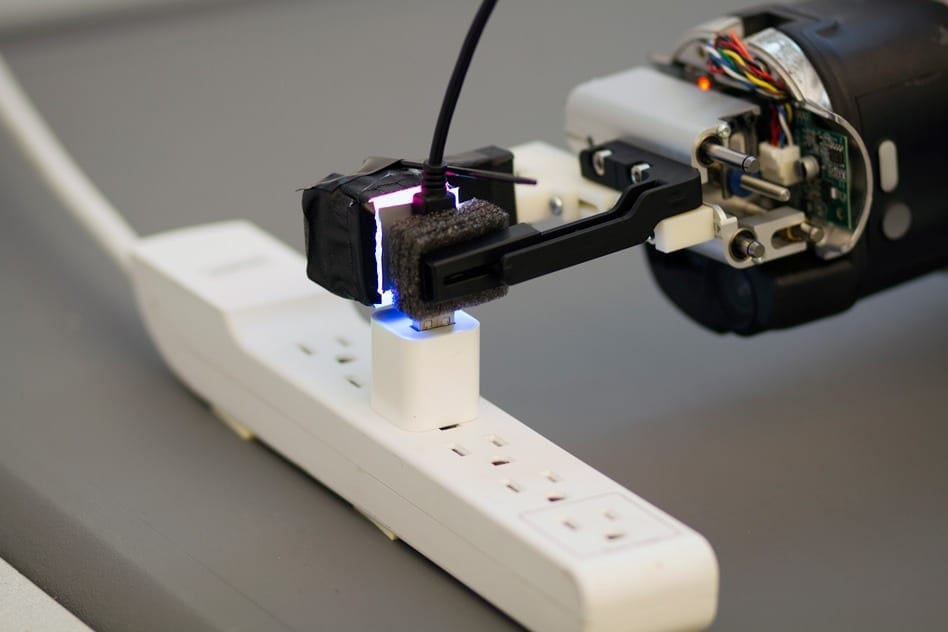
The MIT BioSuit, a skintight spacesuit that offers improved mobility and reduced mass compared to modern gas-pressurized spacesuits.
Photo-illustration: Jose-Luis Olivares/MIT
Spacesuits of the future may resemble a streamlined second skin.
For future astronauts, the process of suiting up may go something like this: Instead of climbing into a conventional, bulky, gas-pressurized suit, an astronaut may don a lightweight, stretchy garment, lined with tiny, musclelike coils. She would then plug in to a spacecraft’s power supply, triggering the coils to contract and essentially shrink-wrap the garment around her body.
The skintight, pressurized suit would not only support the astronaut, but would give her much more freedom to move during planetary exploration. To take the suit off, she would only have to apply modest force, returning the suit to its looser form.
Now MIT researchers are one step closer to engineering such an active, “second-skin” spacesuit: Dava Newman, a professor of aeronautics and astronautics and engineering systems at MIT, and her colleagues have engineered active compression garments that incorporate small, springlike coils that contract in response to heat. The coils are made from a shape-memory alloy (SMA) — a type of material that “remembers” an engineered shape and, when bent or deformed, can spring back to this shape when heated.
The team incorporated the coils in a tourniquet-like cuff, and applied a current to generate heat. At a certain trigger temperature, the coils contract to their “remembered” form, such as a fully coiled spring, tightening the cuff in the process. In subsequent tests, the group found that the pressure produced by the coils equaled that required to fully support an astronaut in space.
“With conventional spacesuits, you’re essentially in a balloon of gas that’s providing you with the necessary one-third of an atmosphere [of pressure,] to keep you alive in the vacuum of space,” says Newman, who has worked for the past decade to design a form-fitting, flexible spacesuit of the future. “We want to achieve that same pressurization, but through mechanical counterpressure — applying the pressure directly to the skin, thus avoiding the gas pressure altogether. We combine passive elastics with active materials. … Ultimately, the big advantage is mobility, and a very lightweight suit for planetary exploration.”
The Latest on: Spacesuits
[google_news title=”” keyword=”Spacesuits” num_posts=”10″ blurb_length=”0″ show_thumb=”left”]
via Google News
The Latest on: Spacesuits
- Here are the new spacesuits astronauts will wear for tonight’s Starliner launchon May 6, 2024 at 5:02 pm
NASA astronauts Butch Wilmore and Suni Williams have been suiting up in new spacesuits ahead of the first crewed Boeing Starliner test flight tonight.The Latest Tech News, Delivered to Your Inbox
- Boeing Starliner is hours away from launching 2 astronauts on long-awaited mission. Here’s what’s at stakeon May 6, 2024 at 2:53 pm
Boeing is finally set to attempt a launch of its new Starliner spacecraft, crewed by two NASA astronauts. The inaugural test flight aims to lift off Monday evening.
- SpaceX Unveils Next-Gen Spacesuits Ahead Of World's First Commercial Spacewalk This Yearon May 6, 2024 at 3:47 am
SpaceX has unveiled its new spacesuit that will be used by civilians for spacewalk. The Extravehicular Activity (EVA) Suit, as it is called, will be donned by members of the Polaris Dawn astronauts who are training for their orbital mission this year.
- SpaceX New EVA Suit is One of Many New Space, Moon and Mars Suitson May 3, 2024 at 5:01 pm
Building a base on the Moon and a city on Mars will require millions of spacesuits. The development of many new suit and the execution of the spacewalk will be important steps toward a scalable design for spacesuits on future long-duration missions as life ...
via Bing News










